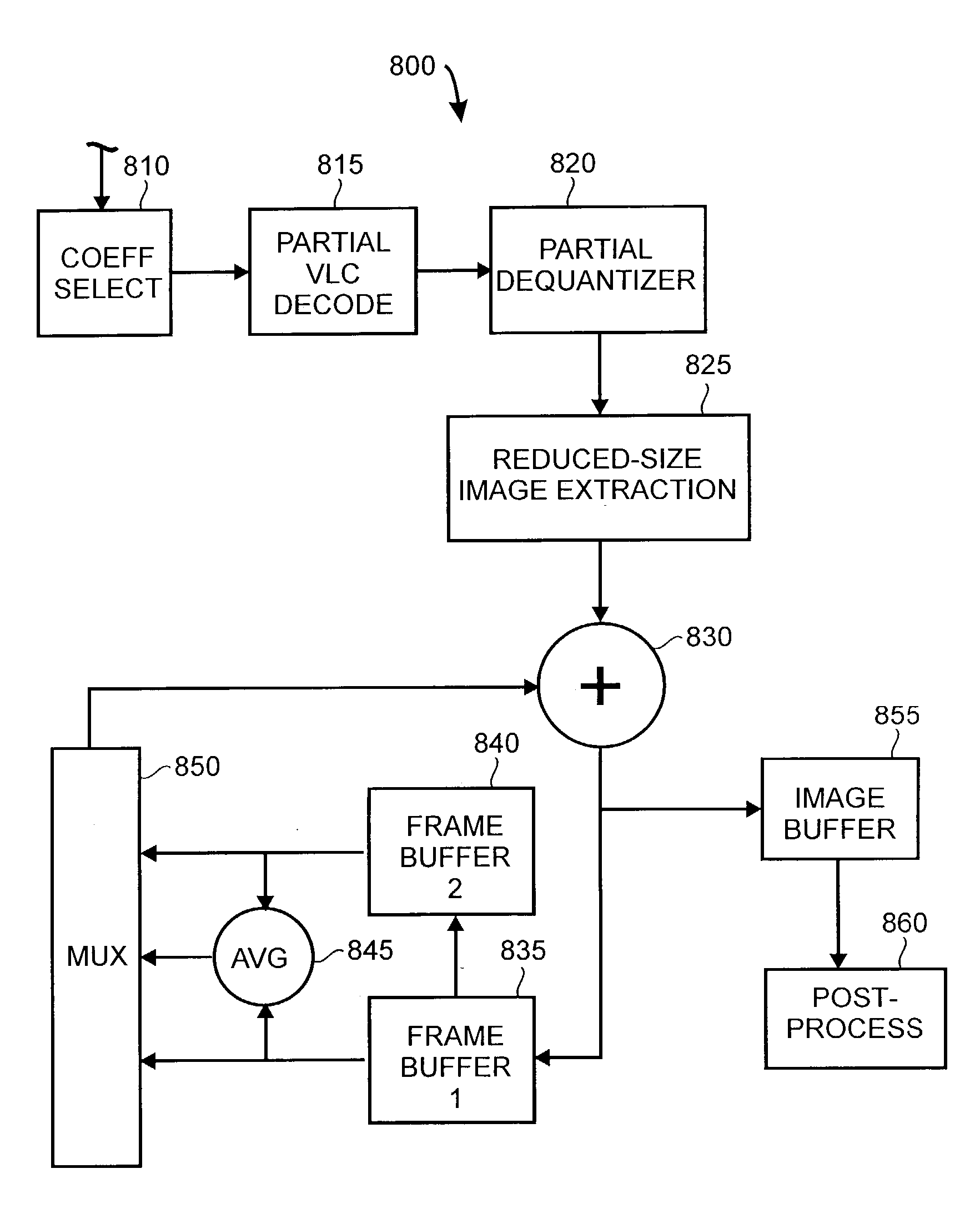Rapid production of reduced-size images from compressed video streams
a video stream and video signal technology, applied in the direction of electronic editing digitised analogue information signals, instruments, carrier indicating arrangements, etc., can solve the problems of heavy computation and memory space, computational inefficiency, and inability to decode in real time the large amount of encoded digital data conveyed in digital television broadcasts
- Summary
- Abstract
- Description
- Claims
- Application Information
AI Technical Summary
Benefits of technology
Problems solved by technology
Method used
Image
Examples
Embodiment Construction
[0086]This invention relates to efficiently producing (generating) images whose size / resolutions are spatially-reduced in comparison with the size of fully decoded frames, from a compressed video stream. The invention can be applied to a variety of video compression techniques, including those supporting interlaced frames and motion compensation. Examples of formal standards defining such video compression techniques are MPEG-2, H.264 and MPEG-4. These image / video compression techniques employ a variety of “transformation” techniques, such as DCT (Discrete Cosine Transform), Hardamard transform, wavelet transform, and integer cosine transform, etc. For purposes of clarity and convenience, the invention is described herein as it applies to the MPEG-2 Video Standard. Those of ordinary skill in the art will understand its applicability to other standards, based on the descriptions set forth herein. Also, for purposes of brevity and clarity, the invention is generally described for sing...
PUM
 Login to View More
Login to View More Abstract
Description
Claims
Application Information
 Login to View More
Login to View More - R&D
- Intellectual Property
- Life Sciences
- Materials
- Tech Scout
- Unparalleled Data Quality
- Higher Quality Content
- 60% Fewer Hallucinations
Browse by: Latest US Patents, China's latest patents, Technical Efficacy Thesaurus, Application Domain, Technology Topic, Popular Technical Reports.
© 2025 PatSnap. All rights reserved.Legal|Privacy policy|Modern Slavery Act Transparency Statement|Sitemap|About US| Contact US: help@patsnap.com



